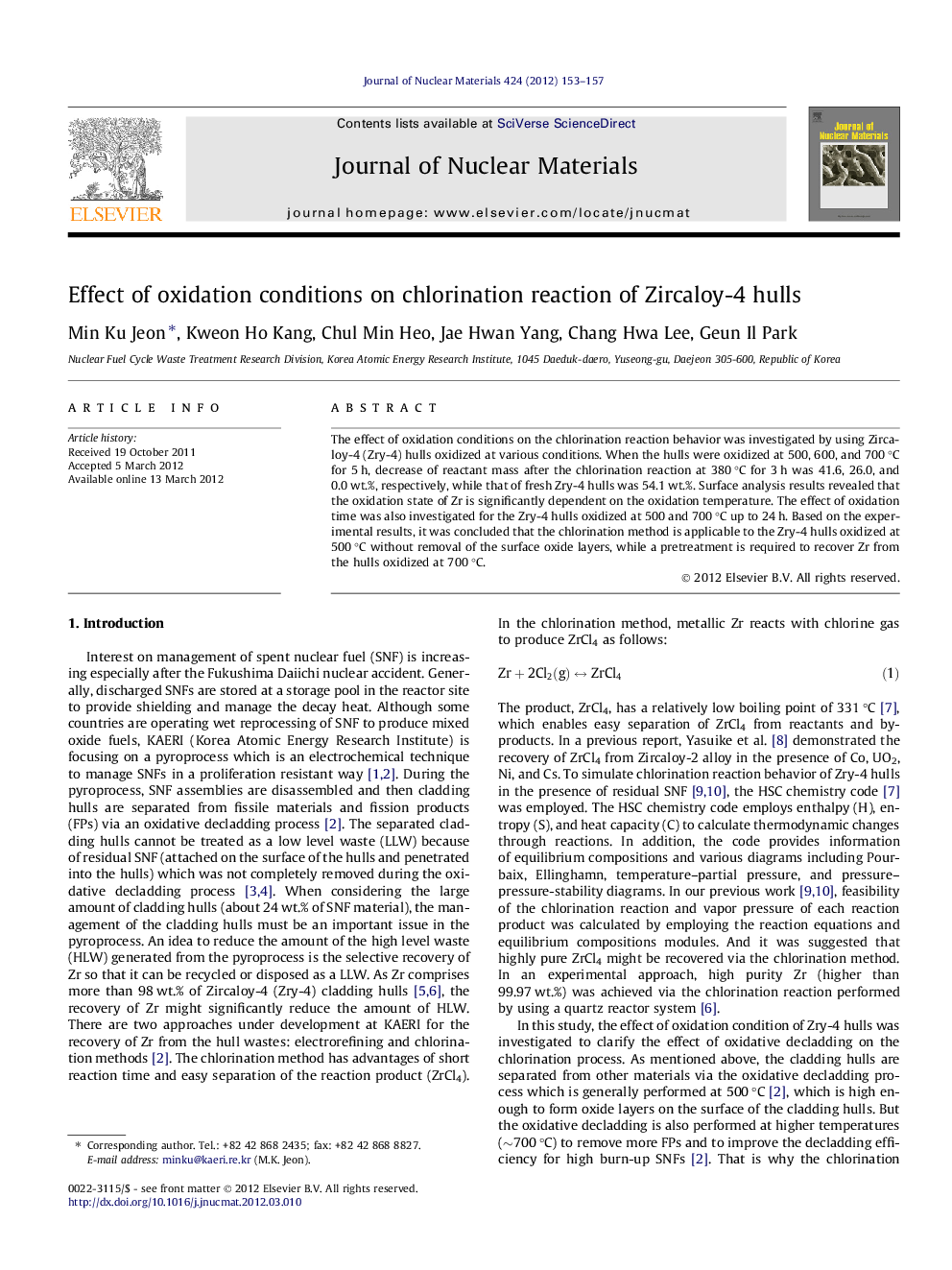| کد مقاله | کد نشریه | سال انتشار | مقاله انگلیسی | نسخه تمام متن |
|---|---|---|---|---|
| 1566179 | 1514222 | 2012 | 5 صفحه PDF | دانلود رایگان |

The effect of oxidation conditions on the chlorination reaction behavior was investigated by using Zircaloy-4 (Zry-4) hulls oxidized at various conditions. When the hulls were oxidized at 500, 600, and 700 °C for 5 h, decrease of reactant mass after the chlorination reaction at 380 °C for 3 h was 41.6, 26.0, and 0.0 wt.%, respectively, while that of fresh Zry-4 hulls was 54.1 wt.%. Surface analysis results revealed that the oxidation state of Zr is significantly dependent on the oxidation temperature. The effect of oxidation time was also investigated for the Zry-4 hulls oxidized at 500 and 700 °C up to 24 h. Based on the experimental results, it was concluded that the chlorination method is applicable to the Zry-4 hulls oxidized at 500 °C without removal of the surface oxide layers, while a pretreatment is required to recover Zr from the hulls oxidized at 700 °C.
► Chlorination reaction behavior is evaluated for Zircaloy-4 hulls oxidized at various conditions.
► Chlorination reaction rate is decreased by increasing oxidation temperature.
► Zircaloy-4 hulls oxidized at 500 °C can be chlorinated regardless of oxidation time up to 24 h.
► Zircaloy-4 hulls are immune to chlorination reaction when oxidized at 700 °C prior to the chlorination reaction.
Journal: Journal of Nuclear Materials - Volume 424, Issues 1–3, May 2012, Pages 153–157